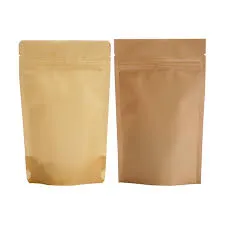- Afrikaans
- Albanian
- Amharic
- Arabic
- Armenian
- Azerbaijani
- Basque
- Belarusian
- Bengali
- Bosnian
- Bulgarian
- Catalan
- Cebuano
- chinese_simplified
- chinese_traditional
- Corsican
- Croatian
- Czech
- Danish
- Dutch
- English
- Esperanto
- Estonian
- Finnish
- French
- Frisian
- Galician
- Georgian
- German
- Greek
- Gujarati
- haitian_creole
- hausa
- hawaiian
- Hebrew
- Hindi
- Miao
- Hungarian
- Icelandic
- igbo
- Indonesian
- irish
- Italian
- Japanese
- Javanese
- Kannada
- kazakh
- Khmer
- Rwandese
- Korean
- Kurdish
- Kyrgyz
- Lao
- Latin
- Latvian
- Lithuanian
- Luxembourgish
- Macedonian
- Malgashi
- Malay
- Malayalam
- Maltese
- Maori
- Marathi
- Mongolian
- Myanmar
- Nepali
- Norwegian
- Norwegian
- Occitan
- Pashto
- Persian
- Polish
- Portuguese
- Punjabi
- Romanian
- Russian
- Samoan
- scottish-gaelic
- Serbian
- Sesotho
- Shona
- Sindhi
- Sinhala
- Slovak
- Slovenian
- Somali
- Spanish
- Sundanese
- Swahili
- Swedish
- Tagalog
- Tajik
- Tamil
- Tatar
- Telugu
- Thai
- Turkish
- Turkmen
- Ukrainian
- Urdu
- Uighur
- Uzbek
- Vietnamese
- Welsh
- Bantu
- Yiddish
- Yoruba
- Zulu
Innovative Strategies for Packaging and Marketing Liquor Products Today
The Art and Importance of Liquor Packaging
In the world of alcoholic beverages, packaging is not merely a protective layer; it is an integral component of branding and marketing. As the global liquor market continues to expand, the significance of effective packaging becomes ever more pronounced. This article delves into the multifaceted role of liquor packaging, exploring its impact on consumer perceptions, brand identity, and sustainability.
Consumer Perception and Attraction
First impressions matter, especially in a market flooded with options. Liquor packaging is crucial in capturing the attention of potential buyers. Innovative and visually appealing designs can differentiate a brand from its competitors on store shelves. For instance, many premium brands employ intricate bottle shapes, vibrant colors, and creative labels to convey a sense of luxury and exclusivity. Packaging is often the first point of interaction between a consumer and a brand; thus, it must evoke feelings of desirability and prestige.
The psychology of colors also plays a significant role in attracting consumers. Shades of gold, black, and deep hues are often associated with quality and richness, while bright colors might appeal to a younger, more adventurous demographic. Furthermore, unique packaging, such as eco-friendly materials or reusable containers, can resonate with a growing segment of environmentally conscious consumers. Packages that tell a brand’s story or highlight its heritage can significantly enhance consumer connection and loyalty.
Brand Identity and Differentiation
In addition to capturing attention, liquor packaging serves as a critical vehicle for brand identity. Every element of the packaging—from the font used on the label to the texture of the bottle—contributes to the story the brand wants to tell. For example, craft distilleries often use handcrafted, artisanal packaging to communicate their dedication to quality and tradition. On the other hand, innovative brands might opt for modern, minimalist designs that signify a break from traditional norms, appealing to a younger, trend-savvy audience.
packaging liquor

Moreover, with the rise of social media, packaging that is visually appealing and shareable is invaluable. Many consumers now curate their lifestyles and purchases on platforms like Instagram and TikTok, and brands recognize that their packaging must be “Instagram-worthy.” Unique and photogenic packaging can drive social media engagement, creating a buzz that traditional advertising methods may not achieve.
Sustainability and Future Trends
As environmental concerns continue to rise, the liquor industry is witnessing a shift toward sustainable packaging solutions. Brands are increasingly exploring materials that are recyclable, biodegradable, or made from post-consumer recycled content. Sustainable packaging not only reduces the carbon footprint but also aligns with the values of a growing demographic of eco-conscious consumers.
For instance, some brands are experimenting with lightweight bottles to reduce transportation emissions, while others are bottling their spirits in refillable or upcycled containers. Innovative companies are even using plant-based inks and sustainably sourced paper for their labels, further minimizing their environmental impact. This trend towards sustainability is not only beneficial for the planet but can also serve as a powerful marketing tool, attracting customers who prioritize environmentally friendly practices.
Conclusion
The packaging of liquor is a compelling blend of art and science that goes beyond mere aesthetics. It influences consumer perceptions, cultivates brand identity, and reflects shifting societal values, particularly concerning sustainability. As the beverage industry continues to evolve, the importance of strategic and innovative packaging will undoubtedly play a pivotal role in shaping market dynamics and consumer experiences. For brands aiming to succeed in this competitive landscape, investing in thoughtful packaging is not just an option; it is a necessity. As the saying goes, “You never get a second chance to make a first impression,” and in the liquor market, that impression often comes from the packaging.













